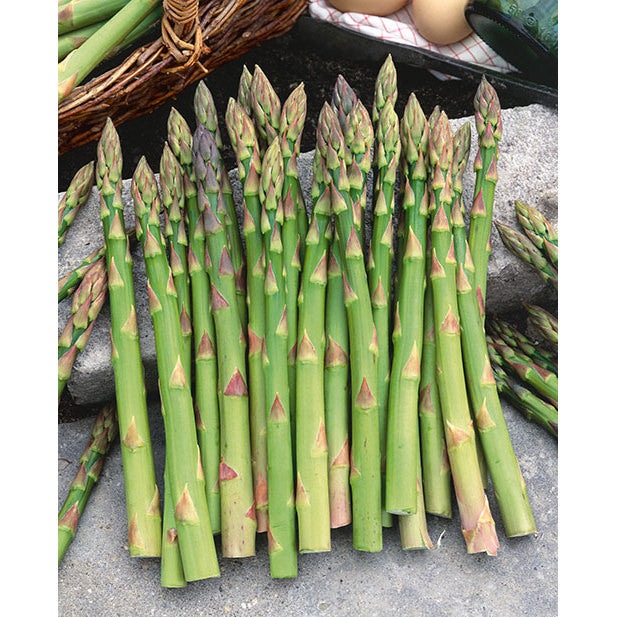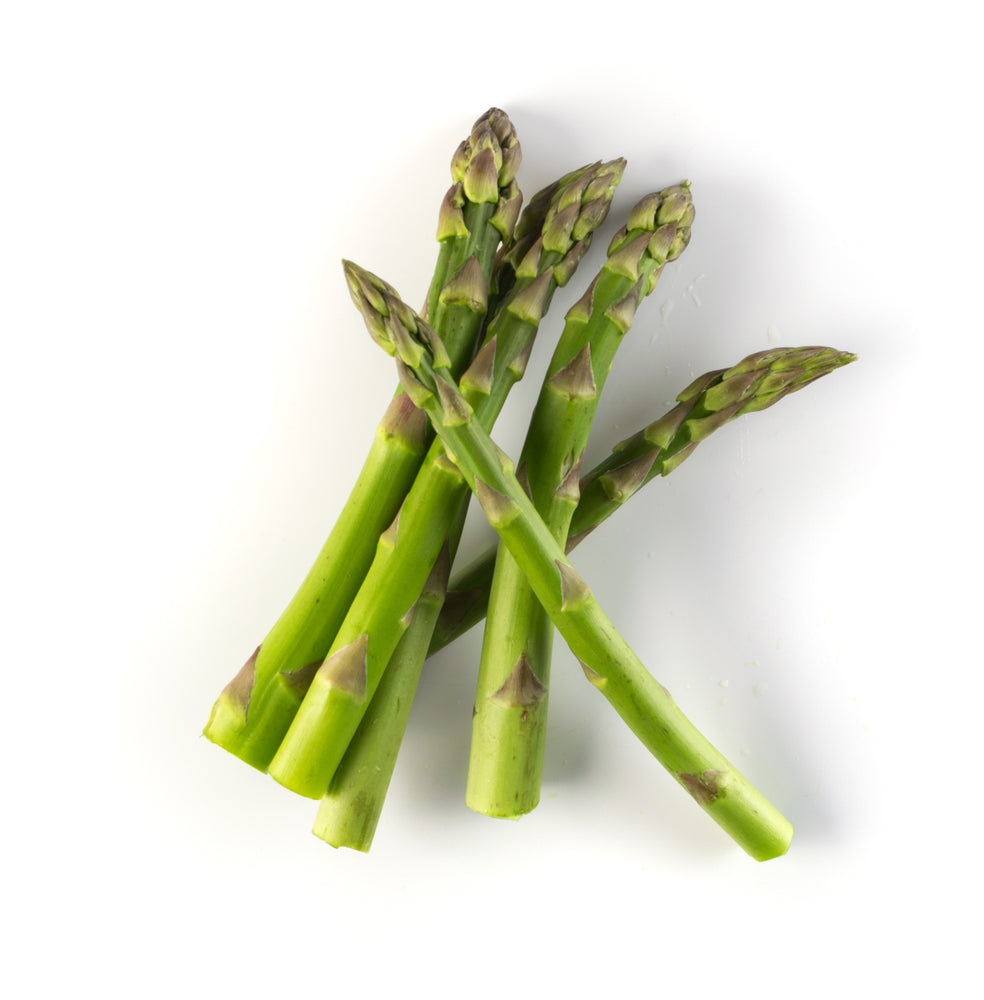



Asparagus officinalis "Mary Washington"
The most popular asparagus in the United States, the crisp delicious taste of Mary Washington will make every dish shine. After the 2nd year, plants will produce full stalks. Do not harvest the growths the first year. Green stalks average 8”.
Planting Instructions
Type: PerennialSun: Full/Partial
Planting Depth: 1/2”
Spacing: 18”
Water: Moderate/High
Days to Maturity/Bloom: 2-3 years
Height: 36-84”
Zones: 4-9
Approx seeds per order 125
This perennial will produce for up to 30 years if started correctly. Be patient, it's worth it for the abundant spring harvests! Asparagus takes two years to establish roots and mature. For the first two years, spears should not be harvested. Be sure to choose a variety that is best suited for your area and growing seasons.
Asparagus grows best in regions with cooler climates and long winters. Plan on 10-20 asparagus plants per person. They are best planted in rows 15-30 feet long. Asparagus does take quite a bit of space in the garden.
Start seeds indoors 12-14 weeks before the last frost. Soak the seeds for 24 hours before planting to enhance germination results. Plant the soaked seeds in seed-starting potting mix. When they reach 12” tall, they are ready to be moved outside. Transplant seedlings just after the last spring frost. Harden them off over a week before planting.
The seedlings should be planted in a temporary garden to begin with so you can identify the male and female plants. In the fall, when they mature, you can identify the male plants as they don't produce berries. The male plants are better producers, and these should be moved to the permanent asparagus bed.
The permanent bed needs to be in full or partial sun – shaded spots are not good. Choose a location that will not be disturbed by other garden vegetables. Since asparagus grows for so many years, this bed needs to support it for that long without disruption. The bed needs to be well-draining – if the ground gets to soggy or pools water, the asparagus crowns (roots) will rot. Remove all weeds and rocks, and mix in 2-4 inches of compost, or aged manure to enhance fertility. Loosen the soil 12-15 inches deep so the crowns grow properly.
Dig a trench 12-18 inches wide and 6-8 inches deep, setting them 3-feet apart. Arrange transplants 12-18” apart. Fill in the trench with a mixture of soil and compost, burying the starts completely.
Water evenly, then add a 4-6 inch layer of mulch. Weeds are a big issue in asparagus gardens and need to be dealt with consistently or the asparagus roots will get disturbed and not grow properly. Only hand-pull weeds!
Give the plants 1-2 inches of water per week during the growing season of the first two years. Add an organic fertilizer regularly.
In the third year, the spears are ready to be harvested as they come up. New spears grow quickly and the garden should be checked every day. Harvest when they are 8-10 inches tall by cutting them at the base. They will produce up to 8 weeks.
After the season is over, allow the ferns to grow out and die in the bed. Cutting them will destroy the garden! They provide important nutrients back into the soil.
Mulch the garden every year to inhibit weeds, and add nutrients. The spears will push up through the mulch in spring.
USDA Zone Map







